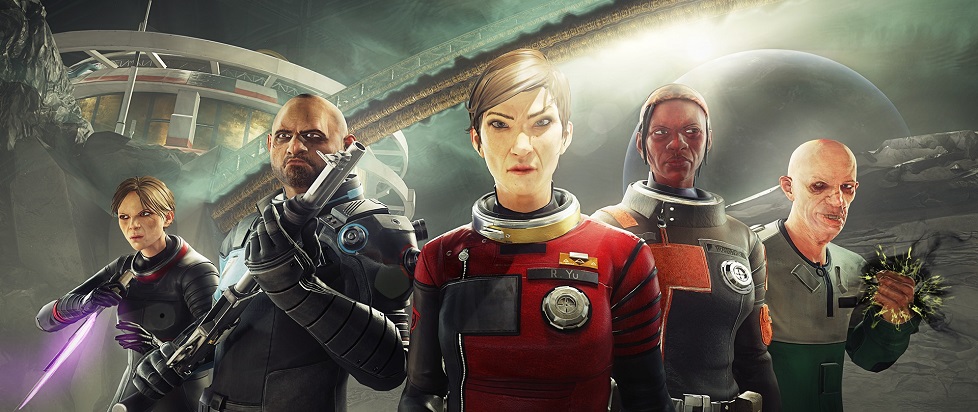
Mooncrash’s Slow Burn Delivers

This column is a reprint from Unwinnable Monthly #111. If you like what you see, grab the magazine for less than ten dollars, or subscribe and get all future magazines for half price.
———
A repository for games and ennui.
———
When the DLC Mooncrash came out for Arkane’s Prey, I missed it. I had enjoyed Prey when I played, but it had run its course with me. I rarely go back to a game for the DLC as I’ve usually forgotten where I was and my current motivation. This could be bad memory or a side-effect of my extreme consumption of games, but either way, the effect is the same. That’s how I made this mistake. I call it a mistake because I honestly believe it is. If I had played more Mooncrash by the time I wrote my list for Games of the Year 2018, it would have not only appeared but would have been featured high.
Before we get too far, let me take a moment and talk about the base game. There have been two games named Prey. The first one is about a Native American being kidnapped by aliens. This is not the game we are talking about. The second one, if I had to give it what’s called an elevator pitch, (a quick comparison to give someone an idea about the feel of a product) I would say the game is heavily influenced by System Shock. You are trapped on a space station with a lot of alien creatures and malfunctioning systems and are trying to escape and understand what’s happening. Very cool game with some great set pieces and fun writing.
Mooncrash is not a continuation of Prey, but an alternate tale that takes place roughly around the same time as the events of the base game. The conceit for the game is you are a contractor of some sort, stuck in a capsule-habitat somewhere in space. You are working out your time by analyzing data for the Kasma Corporation. Your final assignment is to run through this simulation recovered from the moonbase that supported the space station where Prey takes place.

When you log in to the simulation the first time, you only have one character unlocked – a volunteer with psychic abilities. As you play, you discover more playable characters and the simulation gets more hostile. To complete the simulation, you have to have all five characters unlocked and escape with each via their approved escape route. Additionally, the characters all have story moments you can complete to unlock more stuff in game and more info about the different personalities you’re controlling.
To make things more interesting, as you play the game, the “corruption” level of the simulation is steadily rising, giving you an overall time limit and some other interesting side effects. Each time the corruption level rises, more, and more powerful, monsters are added and more stuff goes wrong in the base. This time is calculated over all characters, and the only way to reset it is to reset the simulation. If you die as a character, that character is unavailable until the simulation is reset.
Between runs, your characters keep their neuromods and updates as well as any schematics you might find. Each run provides you with a certain amount of points, these points can be spent before entering the simulation to provide starting equipment to your characters. Whichever schematics you’ve found during play are what’s available for purchase with points.
Those are the basic rules of Mooncrash, but they don’t tell the entire story of the experience. The game really shines in its roguelike characteristics. As you progress, the game gets tougher and the base changes. Sometimes the tunnel you use to get to the lab is caved in, making you have to play hide’n’seek with a giant monster known as a Moon Shark in order to get to where you were going. Other times, parts of the base are without power, forcing you to find and replace control modules in order to power up the doors. There are a number of events and possibilities for changes to the base and how you traverse it. Speaking of traversal, you find the bodies of crew members throughout the base and their key cards that unlock doors. Some of these cards have universal effect while some work only for your current character and their current run.

As I mentioned earlier, the goal is to complete the simulation with all of the characters in the quickest time. The escape routes are interesting, to say the least, and there are exactly enough for the characters. Though there are a couple that can be used by anyone, each character has a specific escape route that they must use in order to finish correctly. Combine this with the changing levels, power outages and corruption levels and getting one character through can be a challenge, let alone five.
Wrapping all of this chaos is the clever writing and world design of the team at Arkane. The base itself is fantastically realized and satisfying to move through and experience. A large part of the games success hinges on doling out the content slowly enough so that the player builds familiarity while still being interesting enough to keep them engaged. These two disciplines can be very difficult to balance, but this game does so expertly, resulting in a game that when I wasn’t playing it, I was thinking about playing it.
Mooncrash is masterfully written and designed.
———
Jason McMaster is a writer and editor with a lifelong passion for games. When he isn’t working on Unwinnable, he’s either on his PC or playing a board game. Follow him on Twitter @mcmaster.




